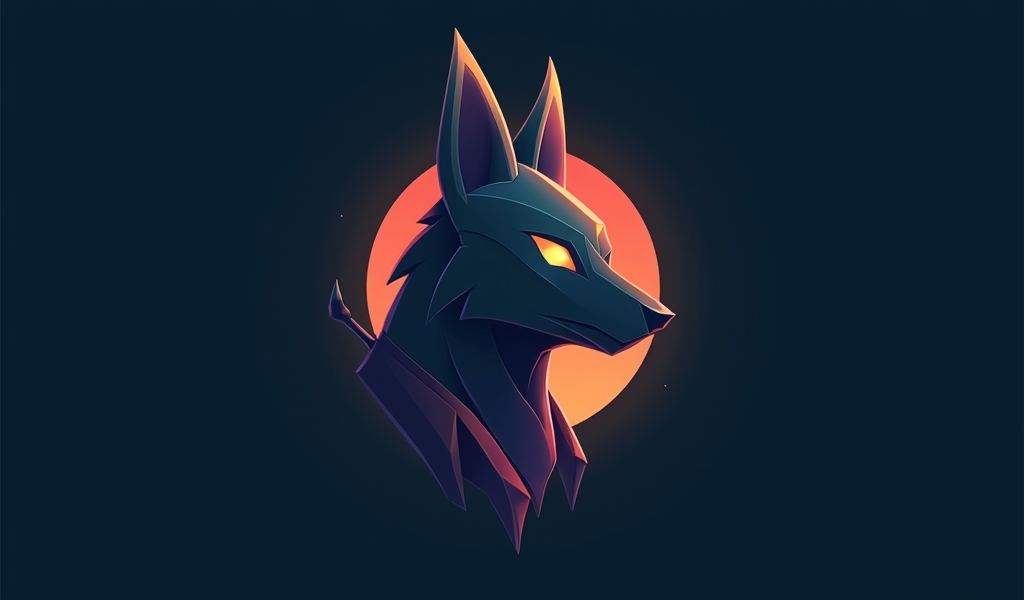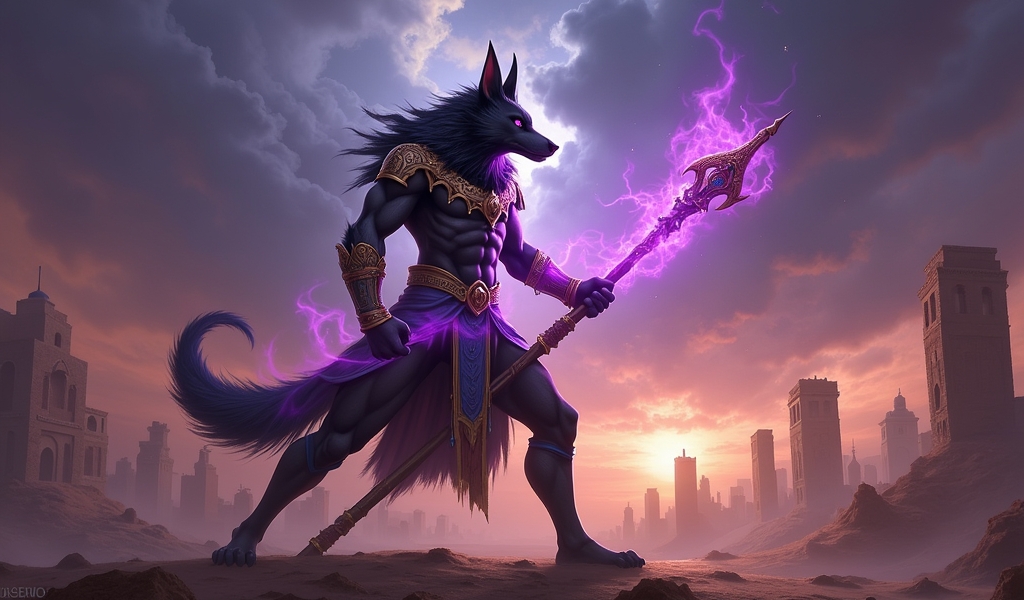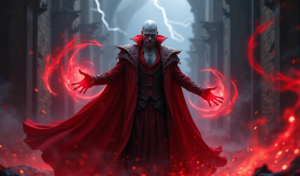Overview
How to play Nasus effectively requires mastering seven essential strategies: surviving the early game, perfecting Q stacking, managing waves, optimizing itemization, dominating mid-game, playing teamfights strategically, and mastering splitpushing. These techniques transform Nasus from a vulnerable early-game farmer into an unstoppable late-game juggernaut who can duel almost any champion and create map-wide pressure through strategic splitpushing.
Table of Contents
Introduction to Nasus
Learning how to play Nasus effectively can transform you into an unstoppable late-game monster in League of Legends. The Curator of the Sands is a unique top lane champion who scales infinitely with his Q ability, making him one of the most fearsome duelists and splitpushers in the game. Despite his simple kit, mastering Nasus requires patience, game knowledge, and strategic thinking.
In this comprehensive guide, we’ll explore seven essential tips that will help you dominate the top lane with Nasus. Whether you’re facing aggressive lane bullies like Darius or other scaling champions, these strategies will help you farm effectively, survive the early game, and become an unstoppable force in the mid to late game.
Nasus’s unique playstyle revolves around scaling and patience, quite different from more aggressive top laners like Fiora. Let’s dive into what makes this champion special and how to maximize his potential.
Understanding Nasus’s Kit and Playstyle
Before diving into specific strategies for how to play Nasus, it’s essential to understand his abilities and overall playstyle. Nasus is the quintessential scaling champion, designed to start slowly but become increasingly powerful as the game progresses.
Nasus’s kit consists of:
- Passive (Soul Eater): Grants inherent lifesteal, allowing Nasus to sustain in lane
- Q (Siphoning Strike): His signature ability that gains permanent damage when it kills units
- W (Wither): A powerful slow that cripples enemy movement and attack speed
- E (Spirit Fire): An AoE damage ability that reduces armor of enemies standing in it
- R (Fury of the Sands): Transforms Nasus, granting him health, armor, magic resistance, and dealing percentage health damage to nearby enemies
Understanding the synergy between these abilities is crucial. Your Q is your primary damage source and scaling tool. Your W lets you stick to targets. Your E helps with wave clear and armor reduction. And your ultimate turns you into a raid boss in the mid to late game.
Unlike champions that need to aggressively seek kills early, Nasus players focus on farming safely and scaling into the game. This passive early game followed by dominant mid and late game is what makes learning how to play Nasus both challenging and rewarding.

Tip 1: Master the Early Game Survival
The early game is undoubtedly Nasus’s weakest phase and mastering how to survive it is crucial. During the first few levels, you’re vulnerable to harassment and all-ins from nearly every top lane matchup. Your goal isn’t to win lane—it’s to survive without falling too far behind.
Start with Doran’s Shield and take the Fleet Footwork keystone in difficult matchups for maximum sustain. This combination can help you weather the storm against aggressive lane bullies like Illaoi or Mordekaiser.
For the first few levels, focus on these key strategies:
- Only last hit minions you can safely reach
- Use your E to last hit from range if necessary
- Avoid trading unless your jungler is nearby
- Position near your tower to discourage aggression
- Consider taking Teleport to recover from bad trades
Remember that it’s better to miss a few CS than to take a bad trade or die. According to official League statistics, Nasus’s win rate increases dramatically after the 20-minute mark, so your primary goal is to reach mid-game intact.
When facing ranged top laners, start with E to help with farming from a distance. Against melee champions like Garen, you might be able to start Q for earlier stacking, but be cautious of their power spikes at levels 2 and 3.
Tip 2: Perfect Your Q Stacking Strategy
Stacking your Q effectively is the foundation of knowing how to play Nasus successfully. Each unit killed with Siphoning Strike grants permanent bonus damage, making it one of the most powerful scaling mechanics in League of Legends.
Set realistic stacking goals for yourself based on game time:
- ~150 stacks by 10 minutes in difficult matchups
- ~200-250 stacks by 10 minutes in even or favorable matchups
- ~300+ stacks by 15 minutes
- ~400+ stacks by 20 minutes
Use cannon minions, jungle camps, and wards to maximize your stacking efficiency. Cannon minions are worth 12 stacks instead of the usual 3 for regular minions, making them high-priority targets. If you’re running Teleport, consider using it to catch a large wave at your tower.
Once you have Sheen and some CDR, you can start stacking more aggressively. Proper use of ability haste is crucial—aim to reach 40% CDR as quickly as possible to reduce your Q cooldown to its minimum. This will significantly increase your stacking speed and combat potential.
A trick used by top Nasus players is alternating between stacking and trading. After you get some stacks and your first item, you can start using your Q on the enemy champion every third or fourth cast, while still focusing primarily on stacking. This creates pressure without sacrificing too much scaling.
Tip 3: Learn Proper Wave Management
Wave management is perhaps the most technical yet essential skill for anyone learning how to play Nasus. Controlling the minion wave can be the difference between a successful scaling phase and getting repeatedly killed under tower.
For the first few levels, aim to have the wave push toward you. This creates a safer farming environment near your tower. You can achieve this by:
- Last hitting only when necessary
- Allowing the enemy to push by taking minimal actions
- Using your E sparingly to avoid pushing
Once the wave is near your tower, try to freeze it there. A perfect freeze occurs when there are 3-4 more enemy minions than allied minions. This forces your opponent to extend to farm, making them vulnerable to ganks, while keeping you safe from harassment.
After completing your first item (usually Divine Sunderer or Trinity Force), you can start using E more liberally to push waves when needed. This is particularly useful when you want to reset the wave, prepare for an objective, or set up for a teleport play.
Against champions like Jax or Malphite who can dive you under tower, consider keeping the wave just outside your tower range where you can still farm safely but are less vulnerable to dives.
As noted by ProGuides, efficient wave management can increase your CS per minute by up to 2, dramatically accelerating your scaling and overall game impact.
Tip 4: Optimize Your Itemization
When learning how to play Nasus, understanding the right itemization is crucial for maximizing your potential. Your item choices should focus on enhancing your strengths (dueling and split pushing) while addressing your weaknesses (kiting and crowd control).
Core items for Nasus typically include:
- Sheen → Divine Sunderer/Trinity Force: Your first major purchase should always be Sheen for the bonus damage on Q. Complete Divine Sunderer against tanky teams or Trinity Force when you need more damage.
- Boots: Plated Steelcaps against AD-heavy comps or Mercury’s Treads against teams with significant CC
- Tank items: Spirit Visage (synergizes with your passive), Frozen Heart, Dead Man’s Plate, or Thornmail depending on the enemy composition
Consider Gargoyle Stoneplate as a fourth or fifth item for teamfights. The active shield can help you survive focus fire while you apply damage and disruption. For split pushing, Hullbreaker provides excellent 1v1 dueling potential and tower-taking power.
Unlike champions like Dr. Mundo, Nasus doesn’t benefit as much from full tank builds—you need damage to be a threat. A balance of offensive and defensive items is optimal, leaning more toward defense after your first two items.
Always adapt your build based on the specific game situation. If you’re ahead, you can invest in more damage-oriented items like Sterak’s Gage. If behind, prioritize defensive stats to survive long enough to be useful.

Tip 5: Dominate the Mid-Game
The mid-game is where Nasus transforms from a passive farmer into a terrifying duelist. After completing your first major item and accumulating 300+ stacks, you enter your first significant power spike, and understanding how to play Nasus during this phase is essential for victory.
Around the 15-20 minute mark, you should start to assert dominance in your lane. With Wither and your ultimate available, you can often 1v1 almost any champion in the game. Look for opportunities to all-in your lane opponent when they overstep, using this sequence:
- Apply Wither (W) to prevent escape
- Cast Spirit Fire (E) for armor reduction
- Activate Fury of the Sands (R)
- Close the gap and begin applying Q
Once you’ve established lane control, you have two primary options: continue splitpushing or group for objectives. The correct choice depends on the state of the game and your team composition.
When ahead, splitpushing often creates the most pressure, forcing the enemy team to send multiple members to deal with you. This creates opportunities for your team to secure objectives elsewhere on the map.
When behind or when critical objectives are contested, you may need to group with your team. In these situations, look to flank and target the enemy backline with Wither, or peel for your carries if the enemy has strong divers.
Remember that Nasus’s mid-game power is temporary—you’ll eventually be outscaled in full team environments by hyper-carries. Make the most of this window by securing objectives and creating a gold lead for your team.
Tip 6: Play Teamfights Strategically
While Nasus excels at 1v1 duels, mastering how to play Nasus in teamfights is crucial for maximizing your impact. Unlike some top laners who dive the backline, Nasus typically plays as a disruptive force, using Wither to neutralize key targets while dealing significant damage.
Your role in teamfights depends on the composition of both teams:
- With a strong frontline: Position behind your tanks and target whoever comes in range, prioritizing your W on the enemy ADC
- Without a strong frontline: Act as a pseudo-tank, soaking damage with your ultimate while applying pressure with Q
- Against dive compositions: Stay near your carries and use Wither to peel
Always activate your ultimate early in the fight rather than waiting until you’re low on health. This maximizes the value of the bonus health and resistances while allowing you to deal AoE damage throughout the encounter.
Position carefully in teamfights. Unlike champions with mobility or long-range engage, Nasus must walk up to deal damage, making him vulnerable to kiting. Look for flanking opportunities or follow up on your team’s engage rather than leading the charge.
Remember that your target selection is crucial. In most cases, you should focus the closest high-value target rather than overextending to reach the backline. Your Wither can reach further than your Q, so use it to disable threats even when you can’t directly attack them.
Tip 7: Master the Art of Splitpushing
Splitpushing is where Nasus truly shines in the late game, and mastering this strategy is essential for anyone learning how to play Nasus effectively. With sufficient stacks, you can take towers quickly and force multiple enemies to respond to your pressure.
The key to successful splitpushing is understanding when to push and when to back off. Push aggressively when:
- Your team is applying pressure elsewhere on the map
- Major objectives (Baron, Dragon Soul) are spawning soon
- You can see multiple enemies on the minimap far from your position
- You have teleport available to join your team if needed
Ward deeply when splitpushing to track enemy movements. Place wards in the enemy jungle and river to spot potential collapses before they happen. This information allows you to make informed decisions about when to continue pushing and when to retreat.
Learn to recognize who you can and cannot duel as the game progresses. With 500+ stacks, you can often take on 1v2 situations, especially if one of the opponents relies on attack speed (which your Wither counters). However, be cautious of champions with strong kiting abilities or percent health damage.
Communicate your splitpushing strategy with your team. Let them know when you’re applying pressure and instruct them to play safely rather than engaging 4v5. The goal is to create a “lose-lose” situation for the enemy team—either they send multiple people to stop you (allowing your team to secure objectives) or they lose towers and inhibitors to your push.
Conclusion
Mastering how to play Nasus requires patience, strategic thinking, and a deep understanding of your power spikes. From surviving the early game to dominating the mid-game and applying relentless split-push pressure in the late game, Nasus rewards players who can think several steps ahead.
The seven tips we’ve covered provide a comprehensive framework for improving your Nasus gameplay:
- Master early game survival
- Perfect your Q stacking strategy
- Learn proper wave management
- Optimize your itemization
- Dominate the mid-game
- Play teamfights strategically
- Master the art of splitpushing
Remember that becoming proficient with Nasus takes time. Don’t be discouraged by difficult matchups or games where you struggle to stack effectively. Focus on consistent improvement and you’ll soon be terrorizing the top lane with the Curator of the Sands.
By implementing these strategies, you’ll transform from a passive farmer into an unstoppable late-game juggernaut. The next time you lock in Nasus, approach the game with patience and a clear strategy for how to play Nasus effectively at each phase of the match. Your opponents will soon learn to fear the cane!
Frequently Asked Questions
When does Nasus hit his power spike?
Nasus typically hits his first major power spike around 15-20 minutes when he completes Divine Sunderer/Trinity Force and reaches 300-350 stacks. His second power spike comes around 25-30 minutes with 500+ stacks and 2-3 completed items.
How many stacks should I aim for by 20 minutes?
In an average game, aim for 350-400 stacks by the 20-minute mark. In favorable matchups, you might reach 450+ stacks, while in difficult matchups, even 300 stacks is acceptable.
Should I prioritize Q stacking or helping my team?
In the early game, prioritize stacking unless there’s a crucial objective fight. After reaching 300+ stacks and completing your mythic item, you should balance stacking with team play based on game state and objective timings.
What are Nasus’s hardest matchups?
Nasus struggles most against ranged bullies like Teemo, Quinn, and Vayne, as well as early game lane dominators like Darius, Renekton, and Illaoi. These champions can deny stacks and potentially snowball the game before Nasus scales.
Is Nasus good for climbing in ranked?
Nasus is excellent for climbing through lower to middle ranks (Iron to Gold) where games tend to go longer and opponents don’t punish weak early games effectively. In higher elos, his effectiveness diminishes as players better understand how to prevent him from scaling.




